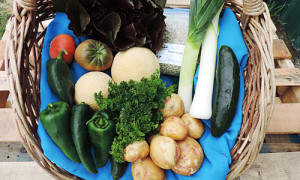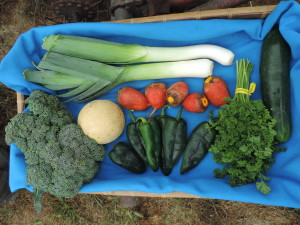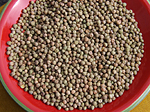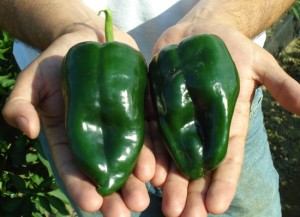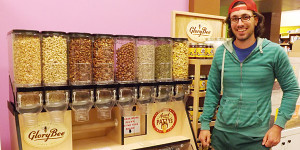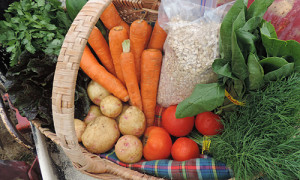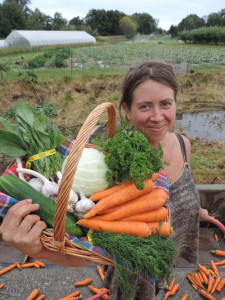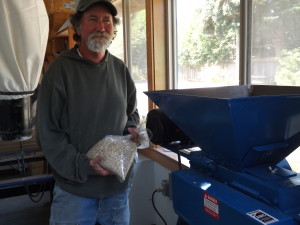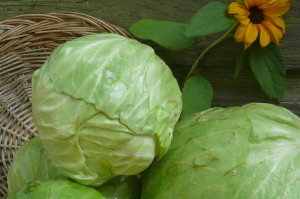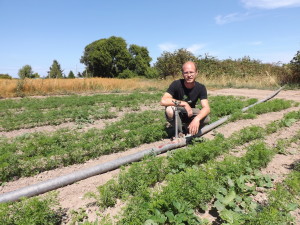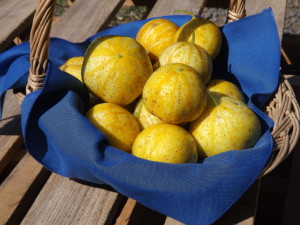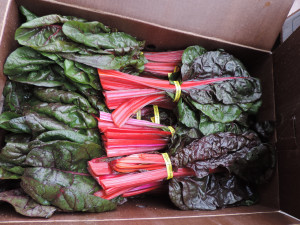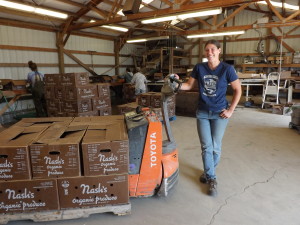Standard Box
Field Peas, 2 lbs
Potatoes, 2.5 lbs
Cantaloupe from Tonnemaker Farm, Yakima Valley, 2
Leeks, 2
Parsley, 1 bu
Cucumber
Lettuce, 1 hd
Poblano Peppers, 1 lb from Alvarez Farm, Yakima
Heirloom Tomatoes
Small Box
Broccoli, 1.5 lbs
Cantaloupe from Tonnemaker Farm, Yakima Valley
Leeks, 2
Parsley, 1 bu
Cucumber
Beets, 1.5 lbs
Poblano Peppers, 1 lb from Alvarez Farm, Yakima
Dried Field Peas
Dried field peas is a small but nutritionally mighty member of the legume family, and a very good source of cholesterol-lowering soluble fiber.
Soluble fiber helps to prevent constipation and digestive disorders like irritable bowel syndrome and diverticulitis. They also help lower cholesterol and are of special benefit in managing blood-sugar disorders, since their high fiber content stablilizes blood sugar levels and prevents them from rising rapidly after a meal. If you have insulin resistance, hypoglycemia or diabetes, legumes like dried peas can help you balance blood sugar levels while providing steady, slow-burning energy.
Field peas also provide good-to-excellent amounts of five important minerals, three B-vitamins, and protein—all with virtually no fat. As if this weren’t enough, dried peas also feature isoflavones, phytonutrients that act like weak estrogens in the body and whose dietary consumption has been linked to a reduced risk of certain health conditions, including breast and prostate cancer.
In addition to their stellar fiber content, dried peas also feature other heart-healthy nutrients. They are a good source of potassium, which may decrease the growth and development of blood vessel plaques and is also good for lowering high blood pressure.
Traditional Field Peas
1 pound dried field peas
1 meaty ham bone
1 large onion, chopped, about 1 cup
1 to 2 ribs celery, thinly sliced
2 cloves garlic, minced
1 tablespoon Cajun or Creole seasoning
1/4 teaspoon dried leaf oregano
Salt and pepper, to taste
Hot cooked rice for 6
Sliced green onions, for garnish
Rinse, pick over (for pebbles that may have escaped the cleaning process), and simmer field peas in water about 1-1/2 hours. Rinse and drain the peas. In slow cooker combine peas with ham bone, onion, celery and garlic. Add 1 cup water or broth. Cover and cook on LOW for 5 to 6 hours. Add Cajun seasoning, oregano, and salt and pepper to taste. Continue cooking for 1 to 2 hours longer. Serve with hot cooked rice.
Poblano Peppers
The Poblano peppers from Alvarez Farms in your boxes this week have a bit of a kick to them! The seeds are especially spicy, so when handling them be careful not to touch your eyes, and keep them out of reach of children. Once the seeds have been removed, the peppers themselves have a mild-to-medium heat, which dissipates a bit when cooked. These tender chiles are wonderful raw in cold salads and salsas, oven roasted, grilled or stir fried. You can also skillet-roast them and puree them up with garlic, salt and water, for a delicious green salsa. Complete recipe details on our Recipe Blog at www.nashsorganicproduce.com.
Basic Chile Relleno
4 Poblano chiles, about 1 pound
1 pound queso fresco, or Cotija cheese, found in most supermarkets. Cut it into small pieces, or grate.
Toothpicks
3 eggs
1 Tbsp. soft white flour
1 cup oil
Grill or broil the chiles on both sides until blackened. Put in a plastic bag for 10 minutes to sweat out moisture. Remove from the bag and cut down middle and remove seeds and pulp. Stuff with cheese and use toothpicks to hold them together.
Separate egg yolks from whites while eggs are cold. Let them come to room temperature separated. Beat whites until they fluff up. Add flour and yolks and mix until completely incorporated.
Add oil to the frying pan over medium heat. Dip the stuffed peppers into the egg batter and fry until golden brown on both sides. Drain briefly and place on serving platter.
Top with salsa verde or a tomato-based salsa or sauce. Serve with rice and beans. You can use Monterey Jack cheese, if the Mexican cheeses are not available.

